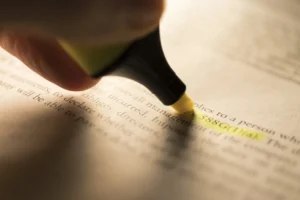KPA Lawyers – June 20, 2020
What is a case conference?
Every family law case has a case conference near the beginning of the process. A judge is involved in this type of meeting. The judge will have two primary goals during the case conference.
The judge’s first goal is to determine whether some or all of your issues can be settled (even temporarily) while you work towards a final settlement.
The judge’s second goal will be to ensure that you and your partner have provided each other with all of the financial or other documents that must be exchanged before the issues can be resolved on a final basis.
Before the case conference
You must send certain documents to the other person and file them with the court generally a week before your case conference. This includes your Form 17A Case Conference Brief. If your case involves support or property issues, you should file updates to your Form 13/13.1 Financial Statement and your Form 13A Certificate of Financial Disclosure with your Case Conference Brief.
You must also exchange financial disclosure with the other party before your case conference. This includes the documents (including Income Tax Returns, proof of current income, assets and debts) that are required before your support or property calculations can be prepared.
At least 3 days before your case conference, you must tell the court that you want your conference to proceed. You do this by filing a Form 17F: Confirmation of Conference that tells the judge the issues you would like to address and the documents the judge should review. If you or the other party don’t file this form, you will need the judge’s permission to go ahead with the conference.
During the case conference
During the case conference, the judge looks at the information that has been provided and listens to what both party has to say. You will be expected to speak truthfully and politely to everyone at the conference – the judge, the lawyers and the other party.
If you have exchanged all your documents, the judge at the case conference can give suggestions for how the issues could be resolved. They can also tell you how another judge is likely to decide the issues if you have a motion or trial. Once you have the judge’s recommendations, it is a good idea for you and the other party to try to agree to resolve some or all of your issues, even on a short-term basis. This helps avoid extra steps in the court process.
If financial disclosure remains outstanding, the conference judge can make an order requiring either party to give the other the necessary documents. The judge can also order that party to pay all or some of the other party’s costs for the conference.
The judge’s recommendations at a case conference are not binding. This means you don’t have to agree with the judge’s recommendations for settlement.
If you and your partner do not resolve your issues at your case conference, the next step will be either a settlement conference or a motion. Either party can bring a motion after a case conference to ask the court for a temporary order. At a motion, the judge who hears the motion may or may not make the same decision as the judge at your case conference. A judge’s decision is based on many things, including the evidence that each party presents to the court.
Each conference is private and confidential. Everything that is said during the conference and any opinions that are given cannot be used outside the conference. Only a written agreement or orders that are made by the judge can be referred to later in your court case.
At the end of your conference, the judge makes a note (or endorsement) in your file to show the conference took place and any orders that were made. You should get a copy of the endorsement.
The judge may record the conference for their use. You can get a copy of this recording only with a judge’s consent or a court order. This is only given in rare situations.
If you have questions about family law in Ontario, feel free to book us online. The lawyer featured in the above video in this article is Karishma Sabharwal.



